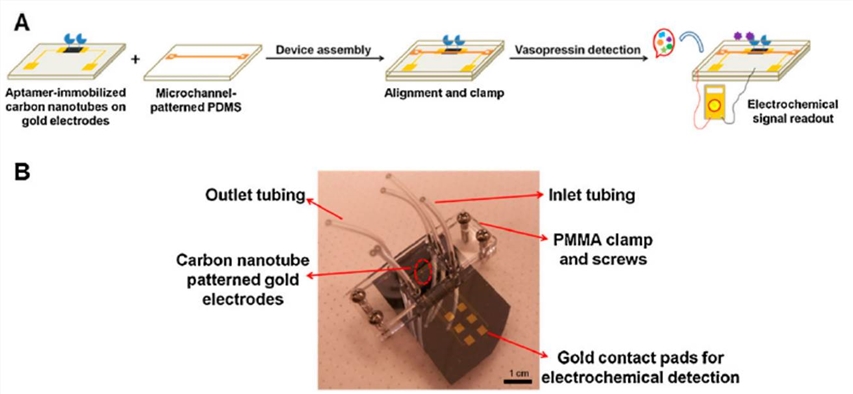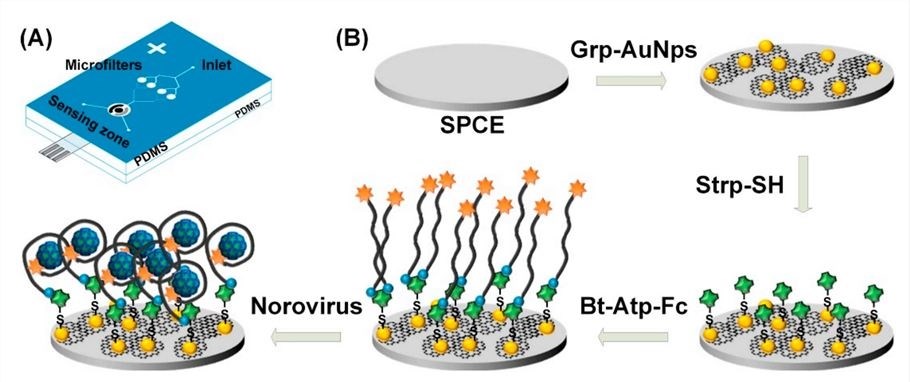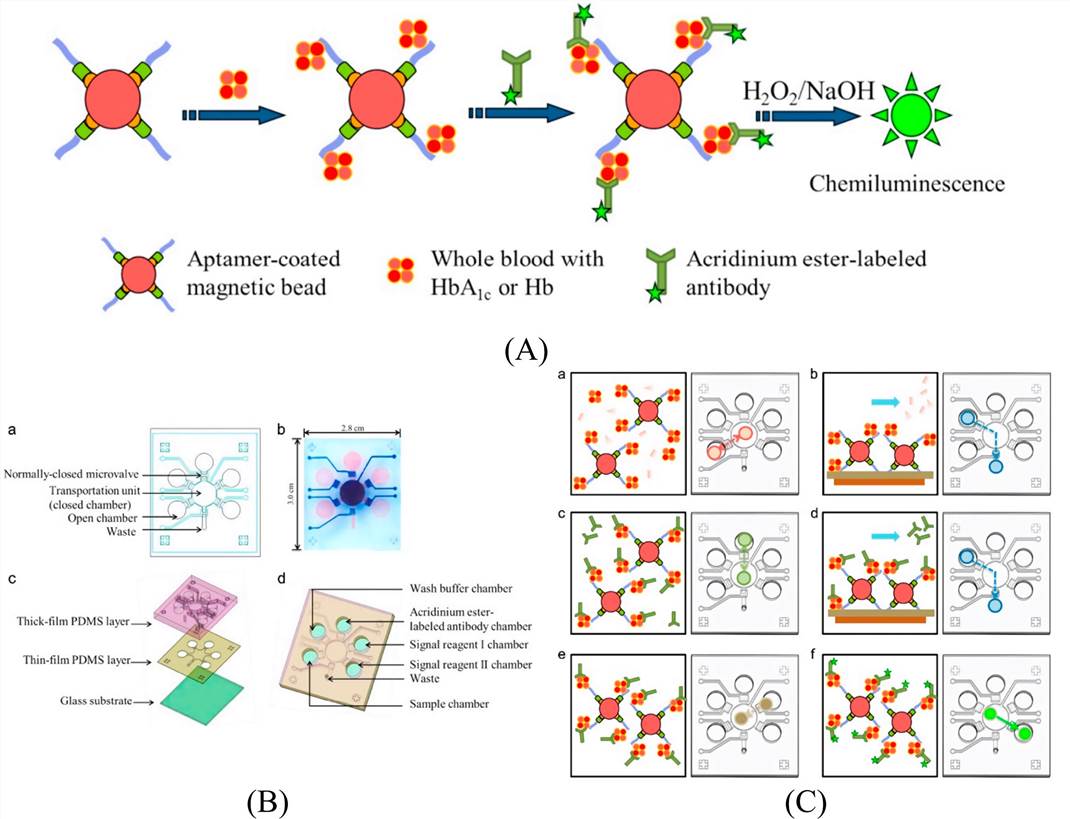Microfluidic systems and their integration with biosensors are extensively studied for construction of lab-on-a-chip platforms. A biological selectivity probe, such as an aptamer, is one of the candidate recognition layers that can be used to detect important biomolecules. The integration of aptasensors with microfluidics offers promising solutions for addressing some pressing diagnosis challenges.
Different Types of Microfluidic Aptasensors
- Microfluidic Aptasensors Based on Electrochemical Detection
Electrochemical biosensors provide a convenient tool for quantifying the analyte due to its direct conversion of a chemical reaction into an electrical signal.
- Amperometric Detection
- Voltammetric Detection
- Impedimetric Detection
Amperometric biosensors are self-contained electrochemical devices that transduce the biological recognition events caused by the oxidation or reduction of an electroactive species into a current signal for the quantification of an analyte. For instance, scientist used the amperometric detection technique to develop an aptamer-based label-free biosensor for the selective detection of vasopressin on a microfluidic platform to build a portable point-of-care (POC) diagnostic device.
 Fig.1 Amperometric microfluidic biosensor utilizing aptamer technology.1
Fig.1 Amperometric microfluidic biosensor utilizing aptamer technology.1
Unlike amperometric technique, voltammetric sensing monitors the redox activity across a range of applied potentials manifesting well-defined current peaks. An aptamer-based voltammetric biosensor was developed by using graphene-gold nanocomposites which offer the sensitive detection of norovirus on microfluidic platform.
 Fig.2 Aptamer-integrated microfluidic voltammetry for norovirus detection.1
Fig.2 Aptamer-integrated microfluidic voltammetry for norovirus detection.1
An impedimetric transduction mechanism is a label-free mechanism which works on the basis of electrochemical impedance spectroscopy (EIS). Scientists have integrated an aptamer-based impedimetric biosensor with microfluidic system to develop an organ-on-a-chip biosensor for sensitive detection of a cardiac biomarker creatine kinase-muscle/brain (CK-MB).
- Microfluidic Aptasensors Based on Field-Effect Transistors (FETs)
A typical FET biosensor is composed of a semiconducting channel that connects the source and the drain electrodes. Any adsorption of biomolecules on the channel surface causes a change in the electric field that modulates the gate potential, resulting in a change in the drain current within the channel of the FET. Such change in the drain current can be used as a detection mechanism for the biosensors.
- Microfluidic Aptasensors Based on Optical Detection
- Fluorescence Detection
- Colorimetric Detection
- Chemiluminescence (CL) and Electrochemiluminescence (ECL)-Based Detection
- Optical Interferometric Detection
Fluorescence-based detection is the most widely used sensing technique encountered in microfluidic applications thanks to its ease of implementation. One of the most widely used nanomaterials in aptamer-based fluorescence biosensors is graphene oxide (GO). GO interacts with single-stranded DNA through π-π stacking with the nucleotide bases and effectively quenches the fluorescence of QDs.
 Fig.3 Mechanism underlying the quenching system utilizing QDs, aptamer, and GO.1
Fig.3 Mechanism underlying the quenching system utilizing QDs, aptamer, and GO.1
One of the main advantages of colorimetric detection is that the color detection can be easily achieved with naked eyes or various commercial devices such as smart phones and flatbed scanners.
Luminescence can be of different types depending on the source of energy or the trigger for luminescence such as CL and ECL. Due to their considerable advantages including sensitivity, selectivity, and large linear quantitative range, CL/ECL-based detection is becoming increasingly popular for aptamer-based biosensor development.
 Fig.4 Diagram illustrating the operational mechanism and architecture of a chemiluminescent aptamer-integrated microfluidic biosensor.1
Fig.4 Diagram illustrating the operational mechanism and architecture of a chemiluminescent aptamer-integrated microfluidic biosensor.1
Interferometric biosensing techniques work by measuring small changes that occur in an optical beam (sensing beam) along its path of propagation.
Reference
- Khan, Niazul I., and Edward Song. "Lab-on-a-chip systems for aptamer-based biosensing." Micromachines 11.2 (2020): 220. Distributed under Open Access license CC BY 4.0, without modification.
For Research Use Only.

